 |
 W³TROPICOS
W³TROPICOS
QUICK SEARCH
MO PROJECTS:
Africa
Asia/Pacific
Mesoamerica
North America
South America
General Taxonomy
Photo Essays
Training in Latin
America
MO RESEARCH:
Wm. L. Brown Center
Bryology
GIS
Graduate Studies
Research Experiences
for Undergraduates
Imaging Lab
Library
MBG Press
Publications
Climate Change
Catalog Fossil Plants
MO DATABASES:
W³MOST
Image Index
Rare Books
Angiosperm
Phylogeny
Res Botanica
All Databases
INFORMATION:
What's New?
People at MO
Visitor's Guide
Herbarium
Jobs & Fellowships
Symposium
Research Links
Site Map
Search
|
 |
Flora and vegetation
|
Home
|
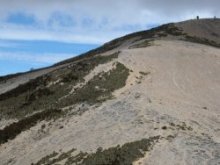 "Super-páramo", Cerro Amarillo
"Super-páramo", Cerro Amarillo
|
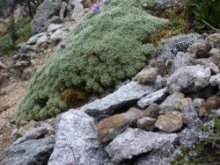 Nototriche hartwegii growing on rocks
Nototriche hartwegii growing on rocks
|
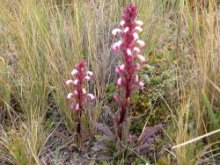 Pedicularis incurva growing in the grass páramo
Pedicularis incurva growing in the grass páramo
|
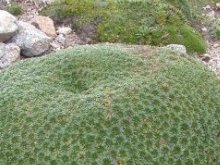 Cushion-plant of Plantago rigida
Cushion-plant of Plantago rigida
|
The flora of CNP is unique; several peculiar species are only found
there and do not occur elsewhere on our planet. Four types of
vegetation are recognized within the páramo: 1) the "super
páramo" (also called "arenal") are sandy dune-like
areas at the tops of the highest mountains like Cerro Arquitecto or
Cerro Amarillo. Although at first glance it would seem that there is
no vegetation, some plants, like the rare Nototriche hartwegii
or Valeriana henricii, have adapted to growing in the sand or
in cracks between the rocks. 2) The "bunch-grass páramo"
dominates the area like an immense sea of grass with scattered shrubs
and colorful herbs. The most important species is the grass
Calamagrostis intermedia; scattered are several attractive
herbaceous species like Bartsia laticrenata, Gentianella
longibarbata, and Senecio chionogeton. 3) The "cushion
páramo" is found in the most humid sites; plants are so
close to each other that they form cushion-like mounds. They can be
formed by a single individual or by several individuals of the same
or different species. Most noticeable are Azorella pedunculata
and Plantago rigida. 4) The shrubby and arboreal vegetation
has shrubs with hard leathery leaves like Berberis lutea, Chuquiraga
jussieui, and Pernettya prostrata, amongst many others; the
patches of forests, scattered around the lakes, or on steep slopes and
ravines, are mainly dominated by species of the genera Polylepis
and Gynoxys. Nowadays Polylepis forests are only found
as small remnants while in the past they occupied more extensive areas.
These remnants area however refuges for characteristic páramo
birds as well as small mammals. In the lakes there are aquatic plants
like Potamogeton paramoanus and in surrounding areas semi-aquatic
plants like Isoëtes novo-granatensis.
The effects of human interactions and burning and grazing, have
degraded some zones of the Park. CNP is carrying out restoration
projects in the most affected areas using native species of grasses
and Polylepis.
In the páramo of CNP some 500 species of vascular plants
are found belonging to 243 genera and 70 families. The most diverse
family is the sunflower family (Asteraceae or Compositae) with 85
species, followed by the Pteridophytes (ferns) with 64, Poaceae (grasses)
with 42, Rosaceae (roses) with 22, Cyperaceae (sedges) with 16, and
Apiaceae, Gentianaceae, Juncaceae, and Valerianaceae with 12 species
each. In CNP, 71 of the more than 4000 Ecuadorian endemic plant species
occur; of these, 10 species are endemics to CNP, i.e., they are only
known from within this area and no where else.
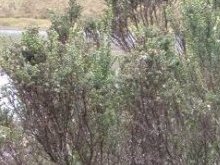 Shrubby páramo
Shrubby páramo
|
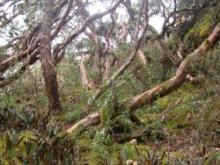 Polylepis forest
Polylepis forest
|
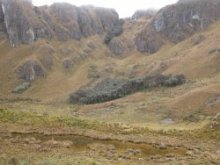 Remnants of Polylepis forests
Remnants of Polylepis forests
|
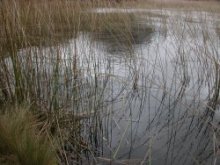 Marsh vegetation of
Marsh vegetation of
Lake Totoras
|
|
|
|








